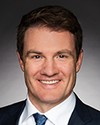Thank you, Mr. Chair.
Mr. Chair, I'd like to start by noting that the last time this committee heard testimony on this issue, one of the witnesses was Chief Allan Adam from the Athabasca Chipewyan First Nation.
While Mr. Adam was here at the committee meeting, he received news that his father-in-law had been diagnosed with bile duct cancer. This is a rare cancer that has affected so many families in Fort Chipewyan. We recently learned that Chief Adam's father-in-law has passed away. I'm sure my colleagues will join me in expressing our sympathies to Chief Adam, his family and his community.
Much of the discussion on this topic has focused on communication, but that's only one of the issues of concern here. The other issue is one that downstream first nations have been raising from the start, which is the likelihood that toxic tailings water is seeping into the environment around the Kearl site and affecting not only the environment, but those people downstream.
My first question for Mr. Pushor is whether he can confirm that, indeed, downstream first nations have been expressing that concern from the very beginning.




